Basil Pesto With Lemon Zest
Make a classic even better: this fresh Basil Pesto with Lemon Zest has all the sweet, earthy notes of traditional pesto plus the subtlest hint of citrus for lasting zip. Make it in your food processor for speed’s sake, or break out a mortar and pestle for a labor of love. Either way, this is the perfect staple to mix in with pasta, spread on grilled proteins, slip into soups, or serve with appetizers and more.
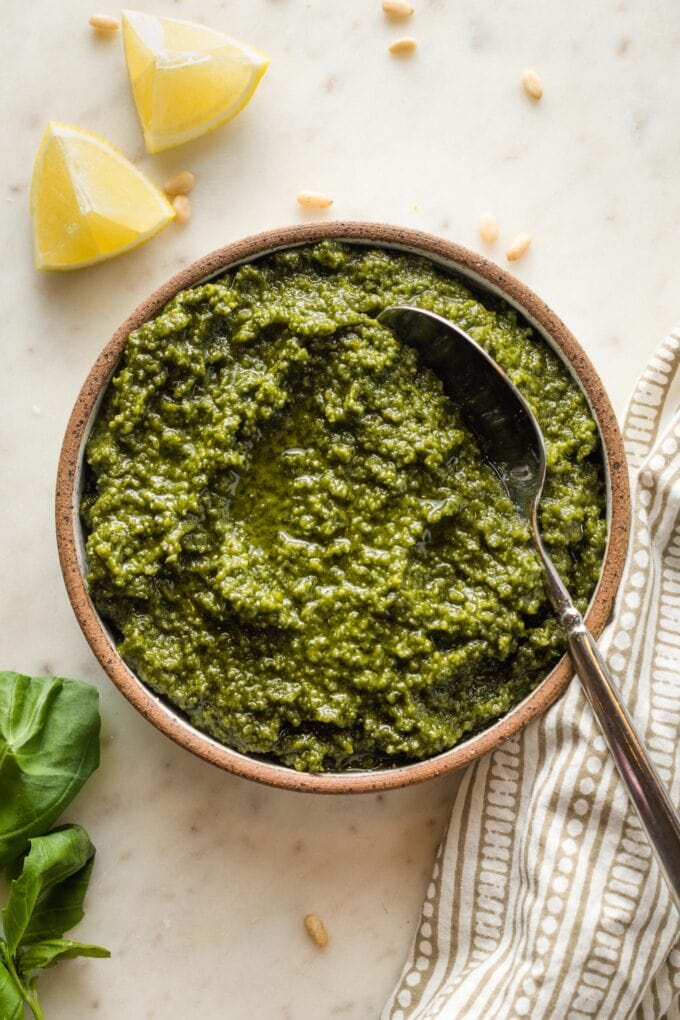
We can all agree that pesto is a fantastic staple. If you have a jar of quality pesto on hand, you’re only some al dente pasta or a quickly sautéed chicken breast away from a perfectly delicious and respectable home-cooked meal.
Homemade pesto is a great way to dip your toes into making sauces and spreads from scratch. And if you’re already a regular pesto-maker, it’s probably something you make like clockwork in the summer, when basil is most bountiful. And if, like me, you simply need pesto in your life year-round and are willing to buy grocery store basil to make it happen, pesto-making might happen pretty often!
Although there are countless recipes for and variations of pesto, there’s always a place for the classic. This, to me, is the one. Basil pesto with pine nuts and Parmesan. Simple, fresh ingredients that add to up even more than the sum of their parts. And we add a smidge of lemon zest to make it stand out from the crowd.
Ingredients & Common Substitutions
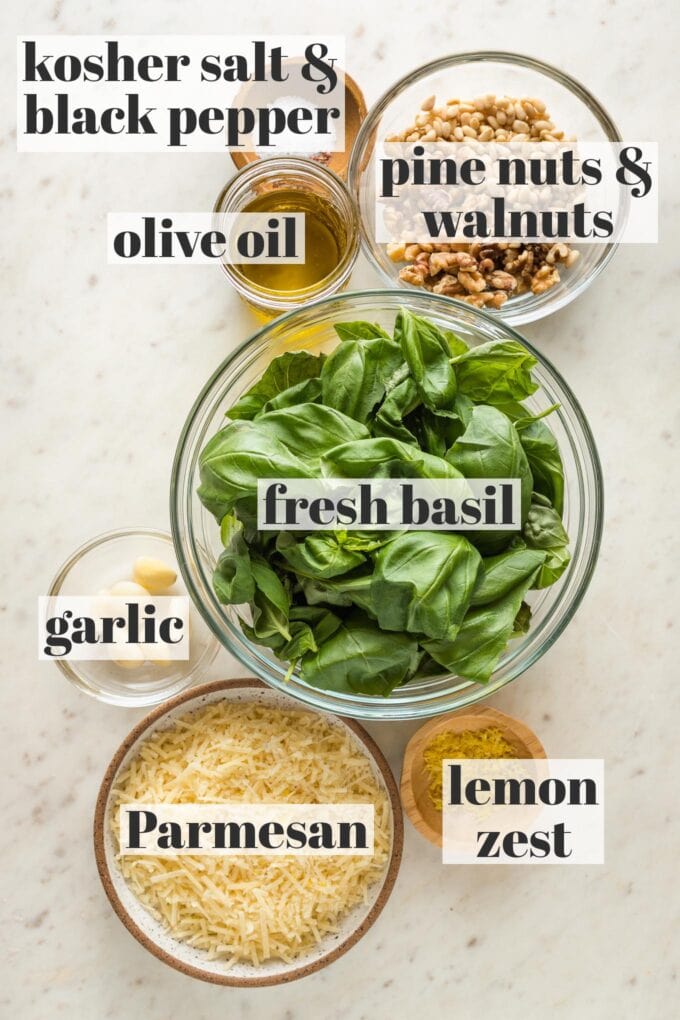
- Fresh basil: Self-explanatory. Use fresh, fragrant basil for the perfectly sweet, mild taste you expect. Mostly leaves, a few stems are fine.
- Parmesan: Grated or shredded. You can substitute all or part Pecorino Romano for a twist.
- Garlic: Only fresh garlic need apply here!
- Nuts: My go-to combination is half-and-half pine nuts and walnuts, preferably both lightly toasted. You can go all pine nuts (tasty but expensive), all walnuts, or substitute almonds for one or the other.
- Olive oil: A key ingredient, so use a high-quality extra virgin olive oil, preferably cold pressed, if you have it.
- Lemon zest: More on this below.
- Kosher salt and black pepper.
Does pesto contain lemon?
Strictly speaking, no. Traditional pesto is a pulsed mix of fresh basil, garlic, pine nuts, extra-virgin olive oil, and Parmesan cheese, perhaps with a smidge of salt. Traditional pesto does not contain lemon juice or zest; purists will claim that it alters the taste and, specifically, that adding lemon juice in large quantity will unnaturally darken the basil.
That said, a smidge of lemon zest, in my experience, is a lovely addition that contributes a subtle brightness to the finished flavor of pesto, without substantially altering the texture or oxidizing the basil.
The only way to know which camp you fall into is to try it and see for yourself!
How To Make Basil Pesto with Lemon
This is a pretty basic pesto recipe, so I won’t belabor the explanation. A food processor makes quick work of combining everything into a smooth, delicious sauce.
I’ve adapted this over time from a classic Ina Garten recipe, tweaking the amounts and simplifying minor steps in the preparation, such as not chopping the garlic before adding it to the food processor.
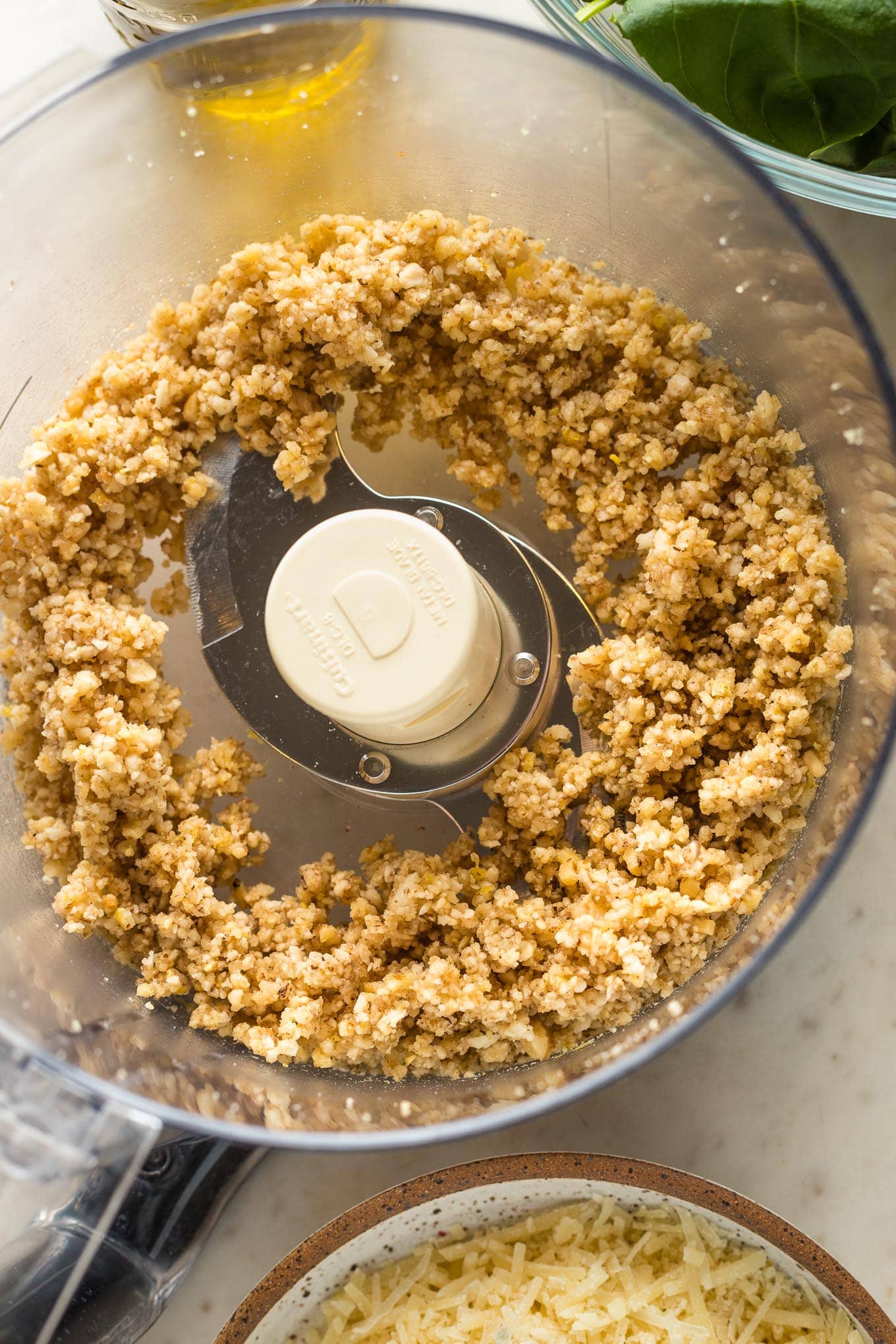
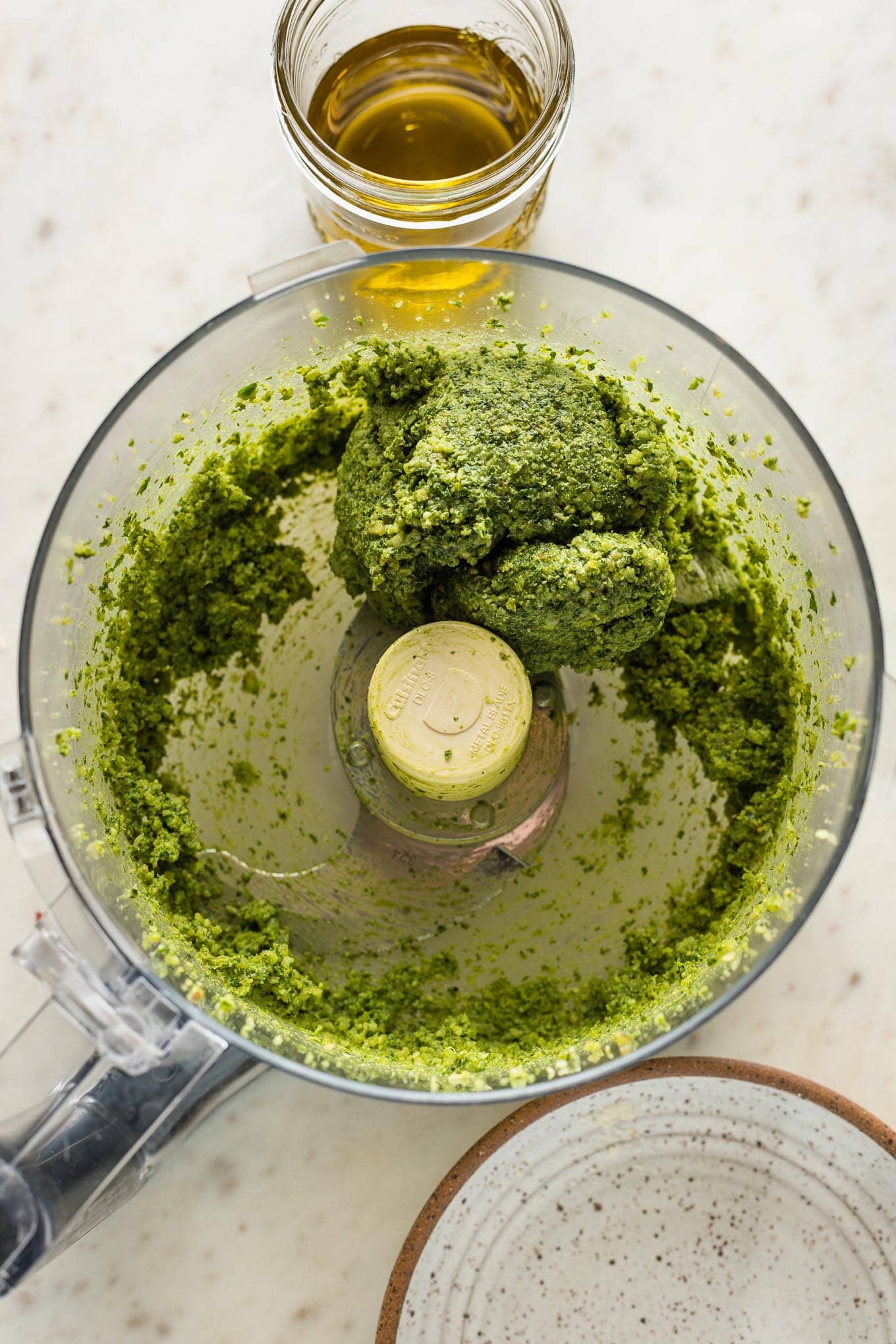
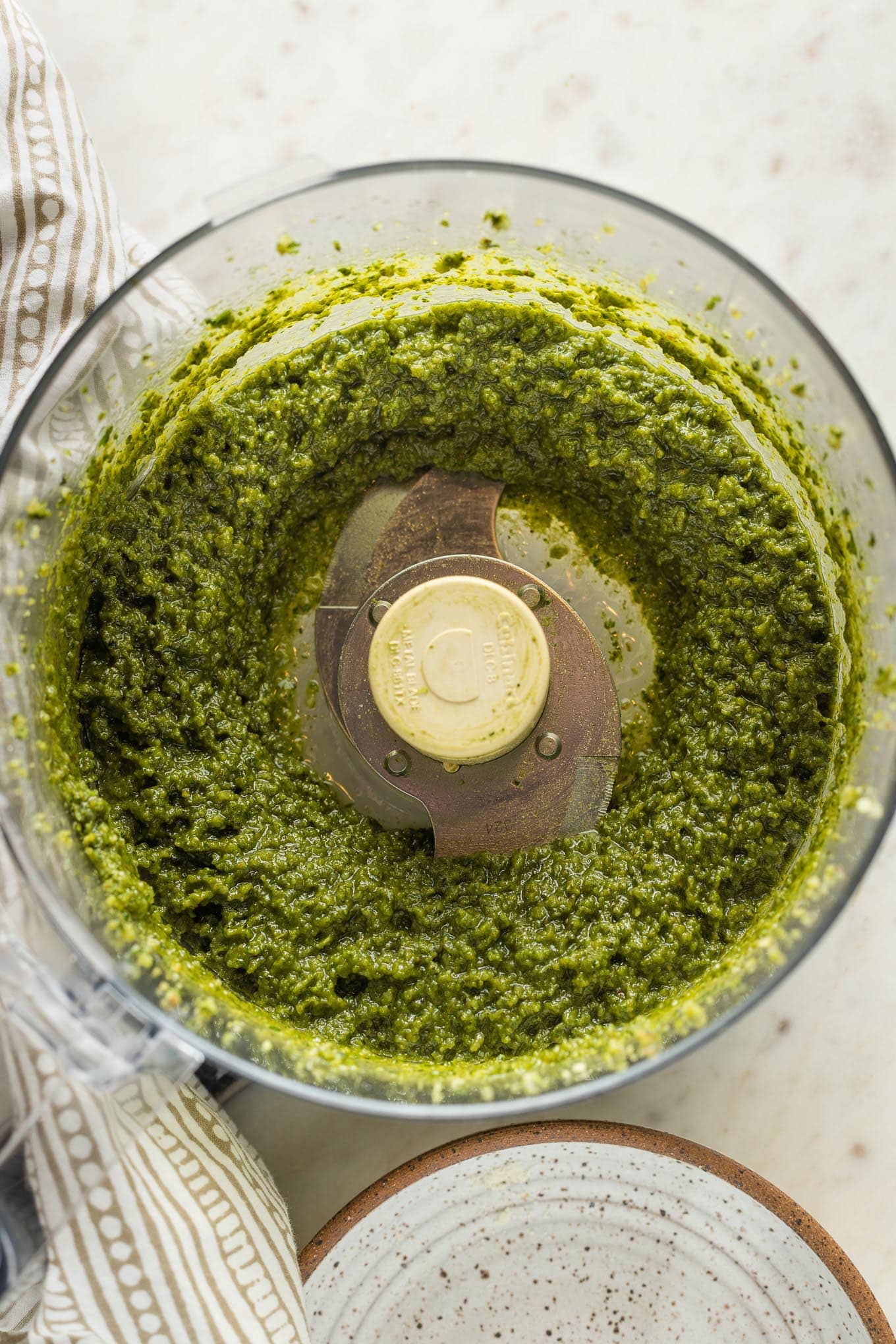
Can you make pesto with a mortar and pestle?
Absolutely! In fact, purists will say that this is the best way by far, and it is the method recommended in Samin Nosrat’s seminal book, Salt, Fat, Acid, Heat. Begin by crushing the garlic and salt together into a paste, then add basil leaves a handful at a time, pounding and crushing into a thick paste. Breaking down the basil alone can take 10 minutes or more to get the ideal texture. Follow by incorporating the nuts, lemon, cheese, and pepper, and finally the olive oil, continuing to pound and mix until smooth and emulsified.
For the mere mortals among us, without exceptional arm strength or a half hour to spend, literally, pounding basil, the food processor will have to suffice.
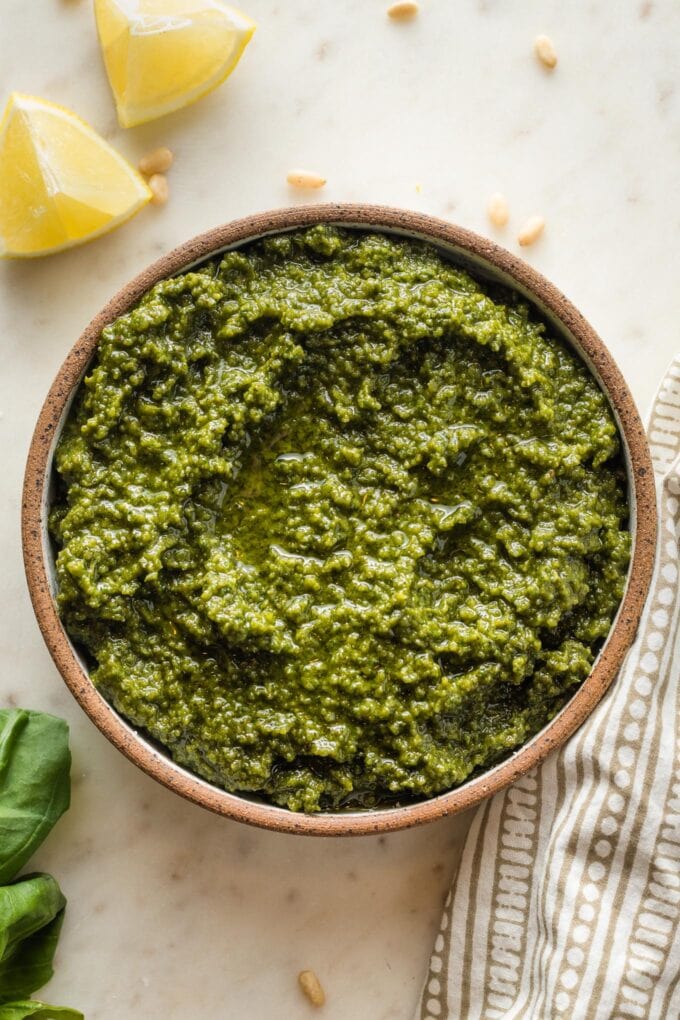
Storage and Freezing
- In the Fridge: Homemade pesto can last up to 2 weeks in the fridge if stored properly, which is to say smoothed into an airtight container with a very thin layer of olive oil coating the top of the pesto. This locks out air and reduces oxidation, the process that steadily turns pesto dull in both color and flavor.
- In the Freezer: Pesto can also be frozen for up to 6 months. The best way I have found is to spoon portions of pesto into ice cube trays, freeze, then pop them out and transfer to a freezer-safe zip-top bag. Press to remove as much air from the bag as possible, seal tightly, store in the freezer, and thaw cubes overnight in the fridge as needed.
How To Use Pesto
The very best reason to make or stock pesto regularly? The endless ways to use it!
Of course you can simply toss pesto into any quick pasta dish for a fresh and fast dinner, but you can also spread it on grilled or pan-fried steak, chicken, or fish for an instant flavor infusion. Toss pesto with cooked shrimp for an easy main dish or appetizer to share. Spread pesto on bread to elevate any sandwich, or place it between toast and a poached egg to make breakfast special.
Favorite Recipes with Pesto
- Creamy Pesto Gnocchi
- Salmon Pesto Pasta
- Chicken Pesto Pasta Salad
- Pesto Rigatoni with Toasted Walnuts
- Gnocchi with Pesto and Charred Cherry Tomatoes
- Pesto Cavatappi (Noodles & Co. copycat)
- Pesto Artichoke Chicken and Pesto Artichoke Pasta
More Recipes for Homemade Pesto
Next, try making our favorite zucchini basil pesto, which tastes every bit as delicious as a classic basil pesto but with tons of good-for-you veggies mixed in. Then, for an even more flavorful red pesto twist, a sun-dried tomato pesto hits the spot.
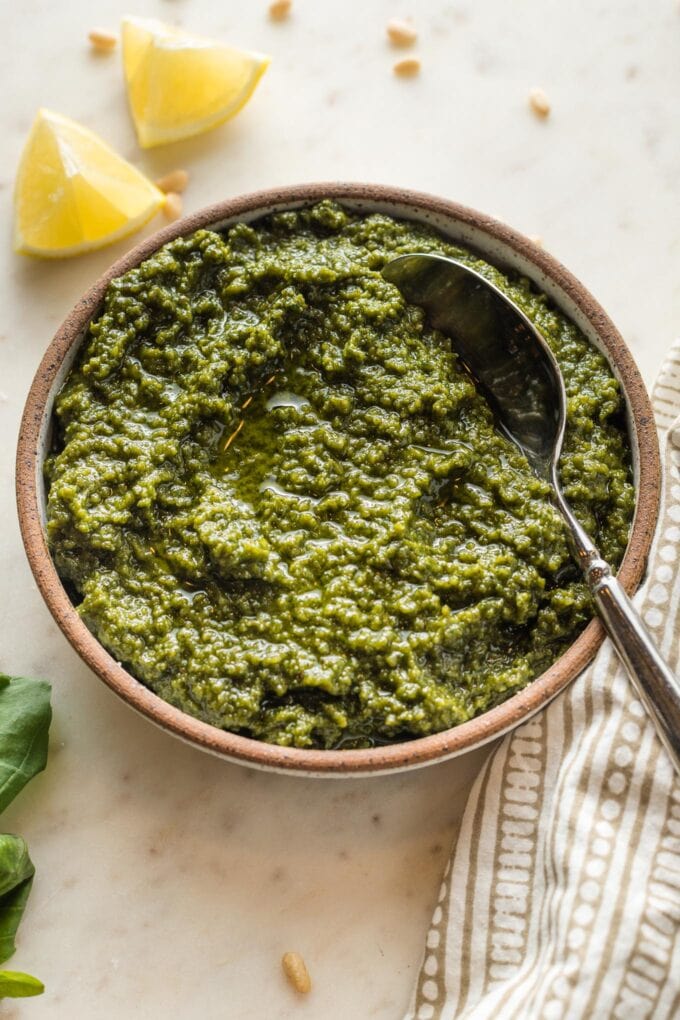
If you try this Basil Pesto with Lemon, don’t forget to rate the recipe and leave a comment below. I love hearing how recipes turn out in your kitchen, and it helps other readers, too.
You can also FOLLOW me on PINTEREST, INSTAGRAM, FACEBOOK, and TWITTER for more great recipes and ideas!
Basil Pesto with Lemon
Ingredients
- 1/4 cup walnuts or walnut pieces
- 1/4 cup pine nuts
- 6 cloves garlic peeled
- zest of half a lemon
- 3-4 cups fresh basil leaves
- 3/4 cup freshly grated Parmesan
- 1 teaspoon kosher salt
- 1/2 teaspoon freshly-ground black pepper
- 1/2-3/4 cup extra-virgin olive oil
Instructions
- Add walnuts, pine nuts, garlic, and lemon zest to the bowl of a food processor. Process for 20-30 seconds to finely chop garlic and nuts.
- Add basil, Parmesan, salt, and pepper, then, with the processor running, add 1/2 cup olive oil. When oil is fully incorporated, stop and check the consistency. If you like a thick pesto, stop there. If you prefer a thinner consistency, restart the blade and add up to 1/4 cup more olive oil, processing until very smooth.
- Use right away, or transfer pesto to a container that can be tightly sealed. Pour a small layer of olive oil over the pesto, seal, and store in the fridge. Use within 1-2 weeks.
Notes
- Store It. Homemade pesto can last up to 2 weeks in the fridge if stored properly, which is to say smoothed into an airtight container with a very thin layer of olive oil coating the top of the pesto. This locks out air and reduces oxidation, the process that steadily turns pesto dull in both color and flavor.
- Use the Old School Method. You can also make pesto using a mortar and pestle, as is famously recommended in Samin Nosrat’s seminal book, Salt, Fat, Acid, Heat. Begin by crushing the garlic and salt together into a paste, then add basil leaves a handful at a time, pounding and crushing into a thick paste. Breaking down the basil alone can take 10 minutes or more to get the ideal texture. Follow by incorporating the nuts, lemon, cheese, and pepper, and finally the olive oil, continuing to pound and mix until smooth and emulsified. Use and store as directed.
- Nutrition information is an estimate per one full cup of pesto – which is a lot!
- Recipe is adapted from Ina Garten.


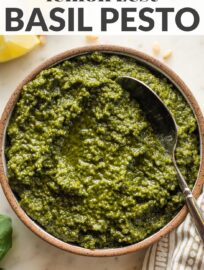
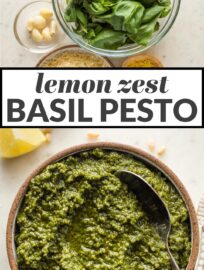
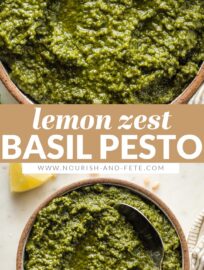
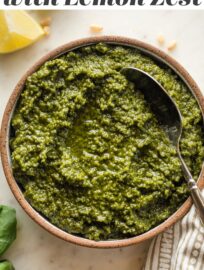
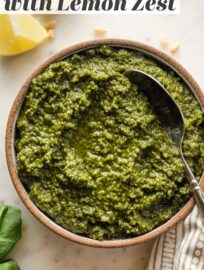
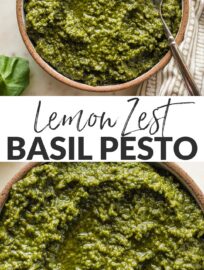
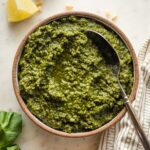

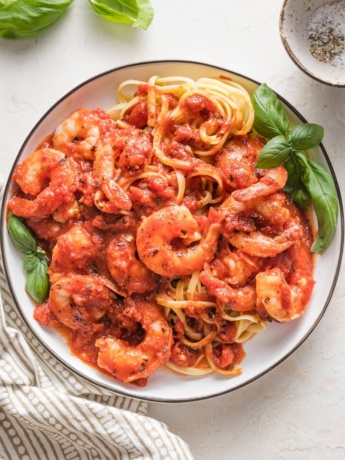
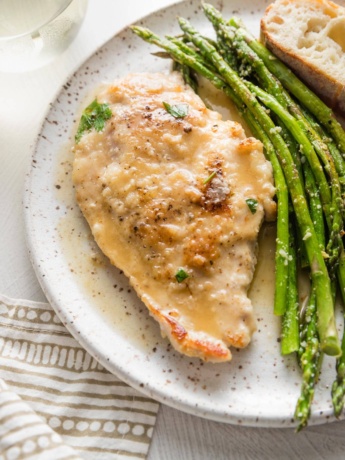
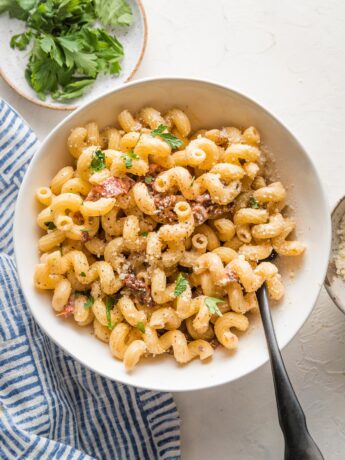
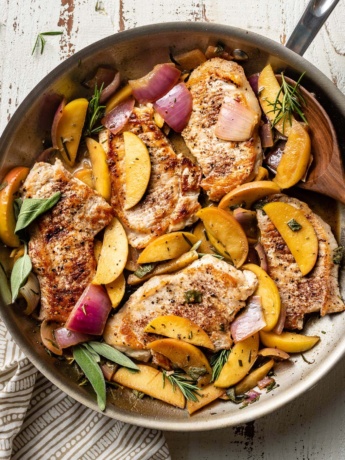


Wow! Brilliant recipe – good amount of garlic and zest (which is a wonderful thing in our books!) Lovely spread on bruschetta (had it last night) or mixed in with pasta (for lunch today). Thanks for the recipe! Can’t wait to find more great uses for this wonderful pesto.
I love pesto with walnuts but adding lemon gives it such a fresh zing. Making this for a prawn pasta dish.
Homemade pesto is always the best. This looks fantastic
Adding lemon zest is a great way to brighten the flavor of pesto. Great recipe!
LOVE the freshness from the lemon zest! SO SO good!
This looks so yummy!
Once you make basil pesto at home you’ll never want to buy it from the store again. A great recipe!
I’ve never tried making my own basil pesto. Must give this a try.
What a lovely basil pesto recipe, I will need to try adding some lemon zest next time I make homemade pesto. Sounds absolutely delicious!
Thanks so much, Diana! I hope you like the addition!
You can’t go wrong with the classic pesto combination. And I love the addition of the lemon zest here. I agree it’s is so great for keeping flavors bright. For longer term storage I like to put the pesto into ice cube trays and then into freezer bags. That’s how I deal with my late summer bounty!
Yes! I did that for the first time last year and it worked so well. Great tip!